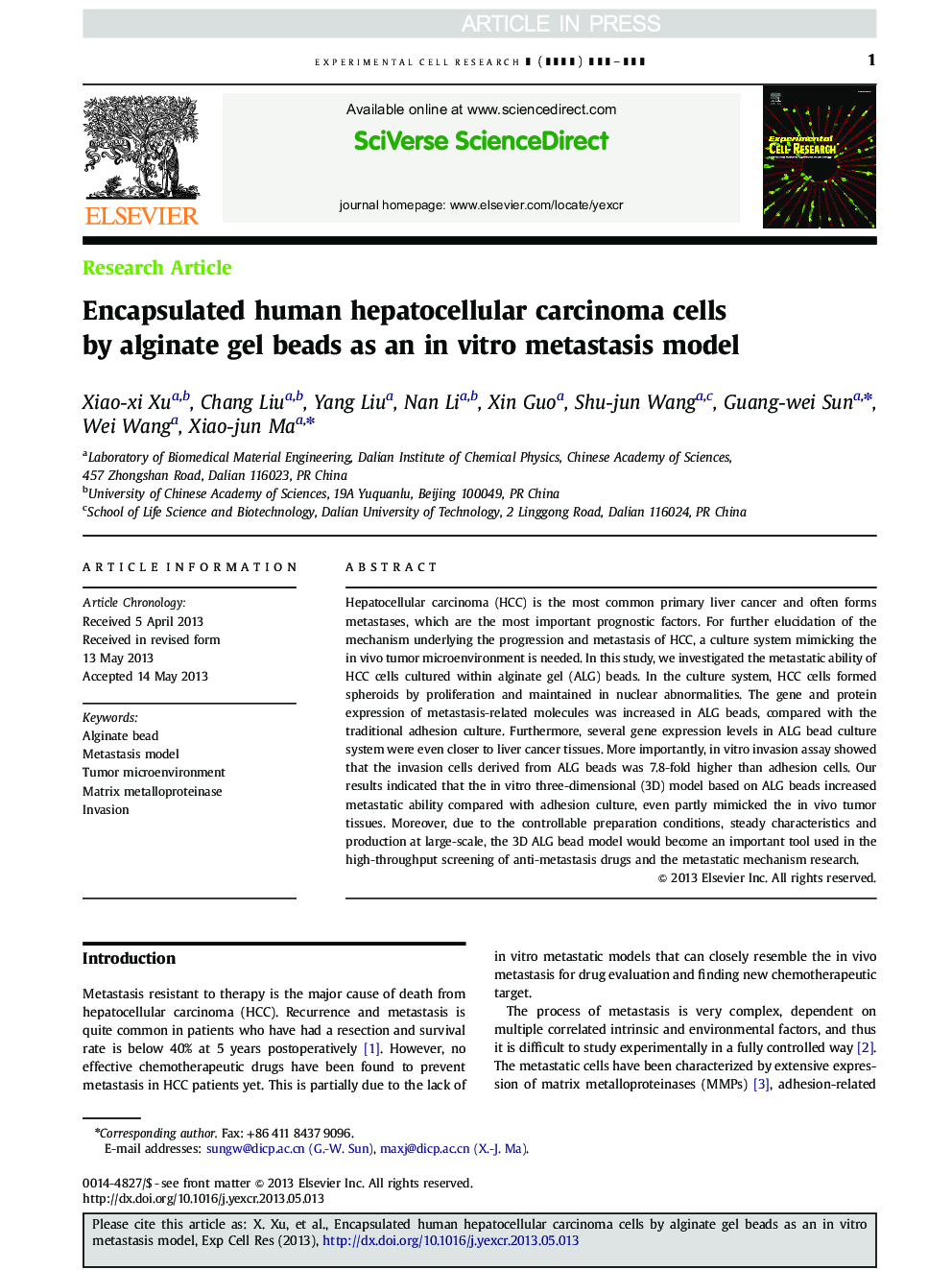| Article ID | Journal | Published Year | Pages | File Type |
|---|---|---|---|---|
| 10904282 | Experimental Cell Research | 2013 | 10 Pages |
Abstract
Hepatocellular carcinoma (HCC) is the most common primary liver cancer and often forms metastases, which are the most important prognostic factors. For further elucidation of the mechanism underlying the progression and metastasis of HCC, a culture system mimicking the in vivo tumor microenvironment is needed. In this study, we investigated the metastatic ability of HCC cells cultured within alginate gel (ALG) beads. In the culture system, HCC cells formed spheroids by proliferation and maintained in nuclear abnormalities. The gene and protein expression of metastasis-related molecules was increased in ALG beads, compared with the traditional adhesion culture. Furthermore, several gene expression levels in ALG bead culture system were even closer to liver cancer tissues. More importantly, in vitro invasion assay showed that the invasion cells derived from ALG beads was 7.8-fold higher than adhesion cells. Our results indicated that the in vitro three-dimensional (3D) model based on ALG beads increased metastatic ability compared with adhesion culture, even partly mimicked the in vivo tumor tissues. Moreover, due to the controllable preparation conditions, steady characteristics and production at large-scale, the 3D ALG bead model would become an important tool used in the high-throughput screening of anti-metastasis drugs and the metastatic mechanism research.
Related Topics
Life Sciences
Biochemistry, Genetics and Molecular Biology
Cancer Research
Authors
Xiao-xi Xu, Chang Liu, Yang Liu, Nan Li, Xin Guo, Shu-jun Wang, Guang-wei Sun, Wei Wang, Xiao-jun Ma,
